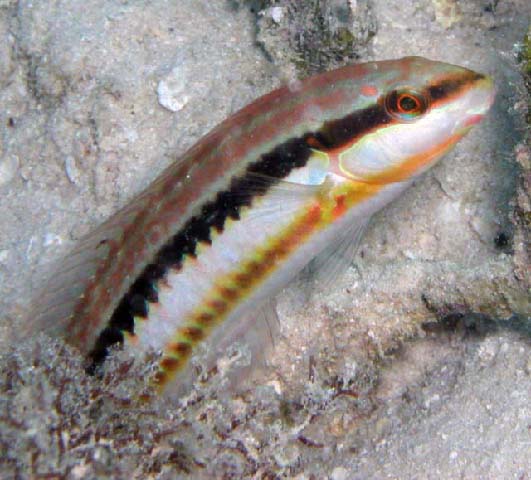| Labridae (Wrasses), subfamily: Corinae |
| 35 cm TL (male/unsexed); max.weight: 146.0 g |
|
reef-associated; marine; depth range 1 - 15 m |
| Western Atlantic: North Carolina, USA and Bermuda to Brazil (Ref. 7251). |
|
Dorsal spines (total): 9-9; Anal spines: 3-3; Anal soft rays: 12-12. The dominant color markings are two dark stripes, one running from snout through eye to caudal base and the other, less pronounced, on lower side of body; a bicolored spot at edge of gill cover within upper dark stripe; large adult males green on back, shading to light greenish yellow on sides, the two stripes usually purplish; irregular light red bands on head and on caudal fin (Ref. 13442). |
| Commonly found in rocky and reef areas in shallow waters. Less common in seagrass beds. Feeds on other fishes (Ref. 5521) and gastropods (Ref. 9626). Forms leks during breeding (Ref. 55367). A protogynous hermaphrodite (Ref. 55367). |
|
Least Concern (LC); Date assessed: 12 March 2008 Ref. (130435)
|
| harmless |
|
Source and more info: www.fishbase.org. For personal, classroom, and other internal use only. Not for publication.

